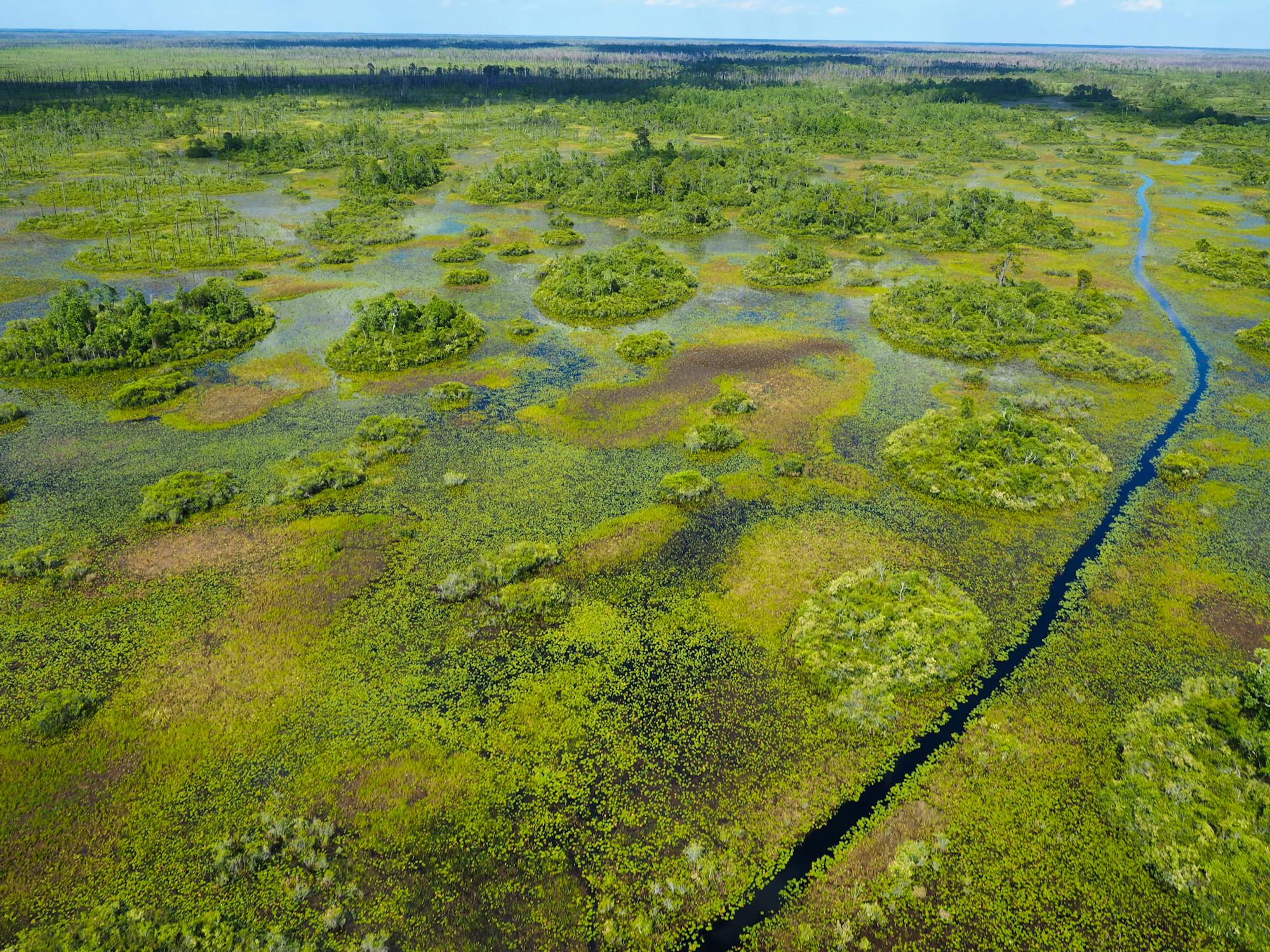Three scientists have set out to explore a remote “jungle” and its tributing waterways. Two adventurers set off in one direction while one stays with the boat, which is docked on the sand bank. It’s strangely quiet until a blood curdling scream rings out. The two scientists start running towards the source. Surely a damsel is in distress!
The water is… disappearing?
It’s not the people who are in trouble here. It’s the swamps.
What is diking a swamp?
Diking a swamp or waterway is when a wall is put up to control water flow. In most cases, the stoppage of water causes the nearby wetland to slowly drain over many years. If the goal is to drain the swamp for development or agriculture, then digging canals or trenches and having the water flow out is a more effective method.
Draining the swamp is not always the goal, though. In some cases, industries need to stop or pool waterways further upriver and they unintentionally cut off water to the wetland.
Why is diking and draining swamps scary?
The United States has lost over half of its wetlands in the lower 48 states and continues to lose more than 60,000 acres per year. Most North American wetlands of significance, including the Everglades and Great Dismal Swamp, have been compromised by development or agriculture. During conversion the wetlands are filled in to make way for roads or flooded to create open-water lakes. The false image of swamps as wastelands is only further fueled by how humans use swamps as dumping grounds for waste and sewage.
Wildlife relying on the habitat and ecosystem services swamps provide, like alligators and wood storks, also suffer from the lands’ conversion. Wood storks are an indicator of wetland health, especially in the southeast. Wetlands provide the specific habitat needed for these birds to nest and hunt.
Consider Corkscrew Swamp Sanctuary in Florida, for example. This swamp supported roughly 100,000 nesting storks in the early 1900s. It was the largest nesting colony of wood storks in the U.S. Then, in the 1960s, roads started to pop up around the swamp. By the mid-70s the area’s wetlands were drained and much of the land around the swamp was converted. While advocates were able to protect the watershed surrounding Corkscrew swamp, the damage was done. Restoration efforts are in place and while there has been some success, in 2018 only 250 pairs of wood storks were reported nesting at the sanctuary.
So, are swamps dangerous?
Despite their forbidding reputations, swamps themselves are not dangerous to humans. While you are unlikely to find any swamp monsters lurking below the water’s surface, anyone exploring a swamp should keep their distance from resident creatures. Stick to designated paths to avoid any further harm to the natural environment and only take memories home with you.
Why are swamps important for our ecosystems?
Swamps, like all wetlands, are nature’s water purifiers: filtering, cleaning and storing the water passed through them. They are also a key buffer for storms, as they collect and hold flood waters and absorb wind and tidal forces.
How you can help swamps and the wildlife relying on them!
"Creatures of the Black Lagoon” is just one example of how movies and media have falsely made swamps and wetlands seem scary or like wastelands. It’s up to all of us to rewrite the narrative to say that swamps are important. Here are three ways to help protect swamps and wetlands:
- Advocate. Make your voice heard by calling for the restoration of wetlands. And for those few swamps – like the Okefenokee swamp in Georgia – that have not been as heavily affected by drainage or diking, yet. Speak up against entities threatening to harm unspoiled wetlands.
- Be Mindful. When visiting wetlands, be mindful of the footprint you leave behind. Pack out what you pack in. Stay on paths and trails. And be respectful of the wildlife you may encounter.
- Flush Out the Truth on Swamps. Share with your friends, family and followers how important wetlands are for our ecosystems and wildlife. Use your platforms to support restoration and preservation.
Join Defenders all October for twists on classic horror movies. Learn about some not-so-spooky animals and the real threats they face!













Follow Defenders of Wildlife
facebook bluesky twitter instagram youtube tiktok threads linkedin